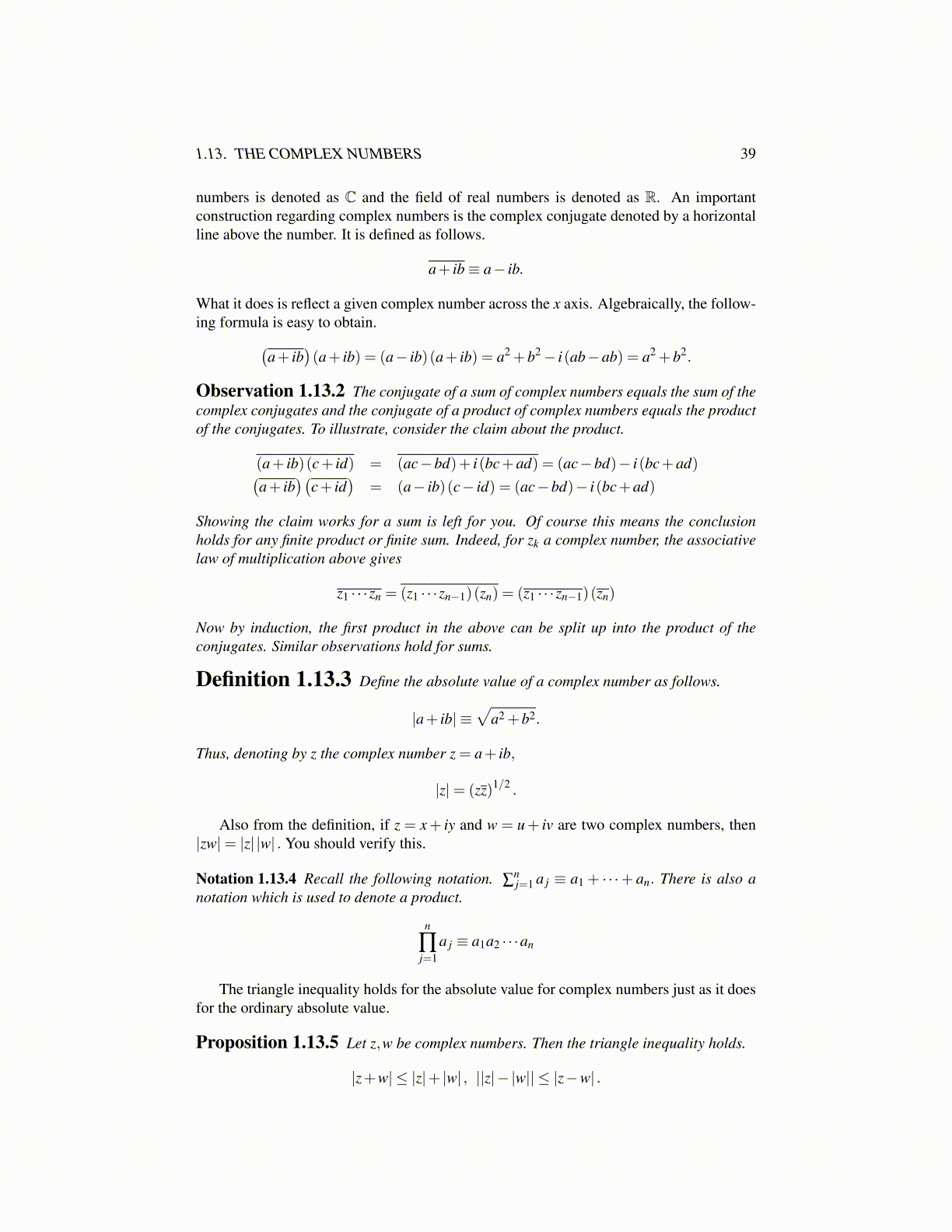
1.13. THE COMPLEX NUMBERS 39
numbers is denoted as C and the field of real numbers is denoted as R. An importantconstruction regarding complex numbers is the complex conjugate denoted by a horizontalline above the number. It is defined as follows.
a+ ib ≡ a− ib.
What it does is reflect a given complex number across the x axis. Algebraically, the follow-ing formula is easy to obtain.(
a+ ib)(a+ ib) = (a− ib)(a+ ib) = a2 +b2 − i(ab−ab) = a2 +b2.
Observation 1.13.2 The conjugate of a sum of complex numbers equals the sum of thecomplex conjugates and the conjugate of a product of complex numbers equals the productof the conjugates. To illustrate, consider the claim about the product.
(a+ ib)(c+ id) = (ac−bd)+ i(bc+ad) = (ac−bd)− i(bc+ad)(a+ ib
)(c+ id
)= (a− ib)(c− id) = (ac−bd)− i(bc+ad)
Showing the claim works for a sum is left for you. Of course this means the conclusionholds for any finite product or finite sum. Indeed, for zk a complex number, the associativelaw of multiplication above gives
z1 · · ·zn = (z1 · · ·zn−1)(zn) = (z1 · · ·zn−1)(zn)
Now by induction, the first product in the above can be split up into the product of theconjugates. Similar observations hold for sums.
Definition 1.13.3 Define the absolute value of a complex number as follows.
|a+ ib| ≡√
a2 +b2.
Thus, denoting by z the complex number z = a+ ib,
|z|= (zz)1/2 .
Also from the definition, if z = x+ iy and w = u+ iv are two complex numbers, then|zw|= |z| |w| . You should verify this.
Notation 1.13.4 Recall the following notation. ∑nj=1 a j ≡ a1 + · · ·+ an. There is also a
notation which is used to denote a product.
n
∏j=1
a j ≡ a1a2 · · ·an
The triangle inequality holds for the absolute value for complex numbers just as it doesfor the ordinary absolute value.
Proposition 1.13.5 Let z,w be complex numbers. Then the triangle inequality holds.
|z+w| ≤ |z|+ |w| , ||z|− |w|| ≤ |z−w| .